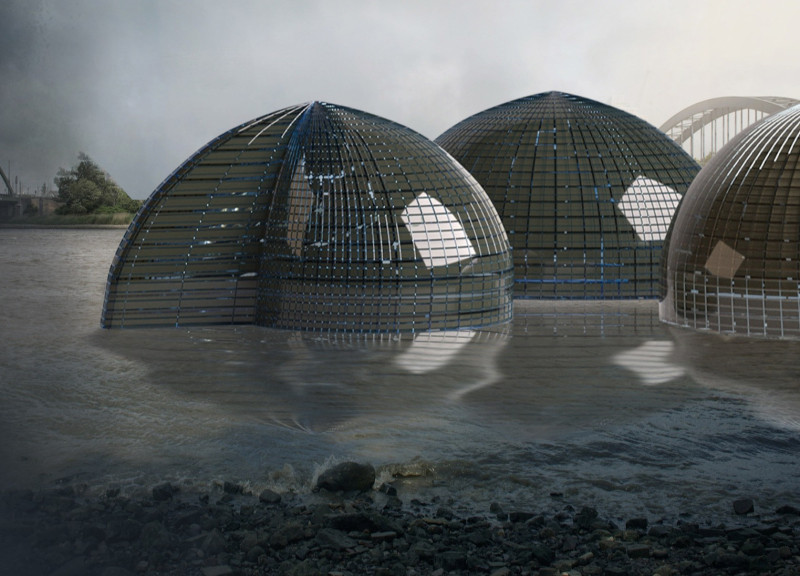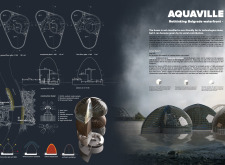5 key facts about this project
Aquaville is an architectural design located along the Belgrade waterfront, where the Sava and Danube rivers meet. The aim is to address urban planning issues while improving public access to the waterside. Mini floating greenhouses are introduced as part of the landscape, drawing on local splavovi culture, where rafts are often used for social gatherings. The design emphasizes sustainability and community involvement, focusing on restoring the natural environment.
Materiality
At the core of Aquaville’s structure is expanded polystyrene, often referred to as EPS. This material is lightweight, made up of about 98% air within a network of closed cells. It provides the necessary buoyancy for floating elements while also being environmentally friendly. The design incorporates protective coatings of concrete and polyurea, offering additional durability against environmental wear and tear. This thoughtful combination of materials helps ensure long-term performance while contributing to energy efficiency.
Sunlight Optimization
The buildings in Aquaville are designed to make the most of natural light. The cube form allows sunlight to penetrate about 30% of its surfaces, while the cylindrical shape increases this to roughly 70%. The half-spherical design maximizes sunlight exposure, reaching an absorption rate of 85%. By prioritizing daylight, the architecture not only improves energy efficiency but also enhances comfort within the spaces.
Community Engagement
Aquaville addresses the challenge of limited urban spaces by creating shared public areas. Replacing existing nightclubs with eco-friendly structures, the project encourages community interaction and provides new recreational zones. This initiative emphasizes the need to connect city dwellers with nature, fostering a sense of belonging and enhancing the overall urban experience.
The design culminates in a series of thoughtfully arranged floating greenhouses that offer practical benefits while being visually appealing, contributing to the ecological revitalization of the riverside and inviting sunlight into everyday life.



















































